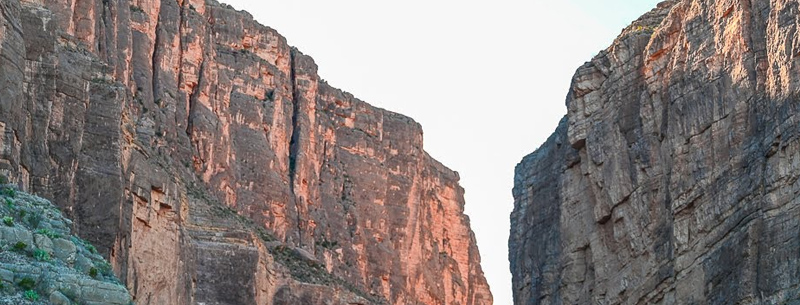With more than 800,000 acres of preserved wilderness, the Big Bend National Park, among the largest National Parks in America, is the ideal destination for campers and RV’ers who are looking for adventure. Visitors to the park will certainly find all they desire in the more than 1,100 sq. miles of the Chihuahuan Desert. A huge expanse of preserved wilderness that covers not only large areas of desert and the Rio Grande area but also the Chisos Mountain range and huge areas with various ponds, streams, numerous gorges, and canyons makes this a place worthy to explore.
Campers and RV’ers will love the fabulous variety of plants and wild animals who live in this park, these are major attractions. This is one of the best spots in all of America to enjoy wildlife observation and bird watching. Bird watchers are amazed at the more than 460 different species of birds found in the park. Big Bend National Park features official bird watching tours and birding expeditions.
Visitors to Big Bend National Park will enjoy the several visitor centers, all are wheelchair accessible and all offer presentations and exhibits. With more than 250 miles of paved and dirt roads, the park is known for great scenic drives and a great way to see the sights. There are also hundreds of backpacking and hiking trails, and many places for camping. The true-hearted wilderness visitors come to Big Bend to hike and camp in the backcountry of the rugged yet beautiful Chisos Mountains and the Rio Grande.
All the parks along the canyon rapids offer rafting, boating, and kayaking adventures. Spring is a favorite time to visit Big Bend because of the harsh weather and conditions in summer and winter seasons. There are many nearby resorts, campgrounds and RV Parks but reservations should be made as early as possible.
Big Bend National Park is a land of borders. Located on the boundary with Mexico along the Rio Grande, it is a spot where countries and cultures meet. It is also a place that blends natural environments, from desert to mountains. It is a place where south joins north and east joins west, creating a great diversity of plants and animals. The park comprises more than 801,000 acres of west Texas, where the Rio Grande forms a sharp turn – the Big Bend.
Once called “a carpet of interacting plants and animals are deftly woven on a geologic loom,” the description conjures up images of looming mountains and stark desert landscapes with a ribbon of water slicing through it all. Indeed, this characterizes the Big Bend and its surrounding area. The park is a diverse natural area of the river, desert, and mountains, as well as a land of extremes – hot and cold, wet and dry, high and low. To wander the glistening desert flats, to ascend the rimrocks of the desert mountains, to drift the canyons of the Rio Grande, to be “on the border,” is to experience views and sounds and silence unmatched elsewhere.
It’s been said that if the Chisos Mountains are the heart of Big Bend. If that is so, then the desert floor is its soul. Ninety-eight percent of the park is desert, and like the mountains, the desert is a land of contrasts-a place where you can touch 400-million-year-old rocks with one hand, and a day-old flower with the other, where extremes of temperatures of 50 degrees or more between dawn and mid-day are not uncommon.
Big Bend’s desert landscape is a study in contrasts – mesas, mountains, and dikes formed by volcanic activity 100 – 200 million years ago when shallow seas covered the area. Dry most of the year, the park is subject to violent flash flooding during summer rains. Water is truly the “architect” of the desert, as its presence or absence determines the way the desert looks and the way humans have been able to use it through time.
Lest you feel a sting of sympathy for the roadrunners, coyotes, or javelinas you may encounter living in this harsh environment, don’t – the adaptations that allow these creatures to live here are no less than amazing, and, in fact, even allow them to thrive. Instead, think of the land not as burdened by its lack (or in some months, abundance) of water, but rather as blessed. It is this cycle of wet and dry that creates spectacular displays of bluebonnets, yucca blossoms, and other spectacular wildflowers.
The one location you can count on seeing water in Big Bend is along the Rio Grande – a linear oasis that’s been called the “lifeblood” of Big Bend. To drift through the majestic canyons of the Rio Grande, with your oars touching two nations at once, is to span time and space.
Although the river, as a boundary between the US and Mexico, looks like a solid line on the maps of the area, it is forever changing. On a trip down the river, your eyes will be opened to a panorama of towering cliffs, brilliant birdlife, and grassy beaches. You may see both the expected and the unexpected – the black phoebe, Big Bend slider, swallows darting into their mud-nest “apartments,” or a Peregrine falcon hunting for prey. At night, the sky is a majestic painting of awe.
A visit to Big Bend is an opportunity to escape to isolation seldom found in daily life. Visitors describe Big Bend as harsh, isolated, lonely, parched, and desolate. But for some people, in the remoteness and solitude, lies the fascination of the Chihuahuan desert.
From the pioneer days of human occupation, people have realized the value of this rugged land that the Spanish called “El Despoblado.” As a result, the people and the area have had a long partnership in Big Bend National Park.
